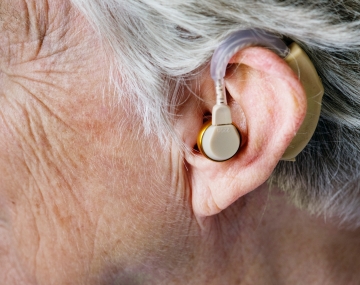Hearing Aids
Hearing loss is debilitating. It’s also one of those things we take for granted. Who imagines a day without the ability to hear? Most people worry about cancer, broken bones, accidents that could result in paralysis. But hearing?
Well, listen up because we’re going to dive into hearing aids in a way that will leave you informed and ready for action if that day ever arrives. A hearing aid is an electronic device (battery powered) that make some sounds louder. A microphone picks up the sound in your vicinity and an amplifier subsequently makes it louder. Lastly, a receiver sends the amplified sound into your ear and you’re now hearing like the rest of us.
Damage to the inner ear or the nerve that connects the brain to the ear can come from aging, loud noises, medications or disease. The medical professional that deals with hearing loss is an ear, nose and throat doctor, also known as an ENT. A simple exam will be performed, and you’ll likely then be sent to an audiologist to check the severity of the loss.
The type of device that you’ll end up using will depend on the severity of your case, your age, lifestyle (if you’re a professional snowboarder something more compact that doesn’t rustle around much), and the kicker – cost. Believe or not some hearing aids can run in the thousands. That “sounds” terrible …
There are two main types of aids – analog and digital. Analog aids will grab on to sound waves, convert them into electrical signals which are then amplified. The volume controls are simple and compared to digital aids, much cheaper. Digital aids occupy a more nuanced technology, converting sound waves into complex, numerical codes which are then amplified. Because they are codes one can manipulate them easier which means being able to adjust them to the exact sound one desires.
Digital aids are smaller, more powerful, and more expensive. With respect to the how hearing aids fit in one’s ear, canal aids fit inside the ear and cannot be seen (or rarely). In-the-ear aids are positioned inside the ear, but within the outer ear. They are visible and a good option for those with mild hearing loss. Behind-the-ear aids are mounted in a plastic case behind the ear. If aesthetics isn’t an issue, behind-the-ear aids are great as they can be used at any age, no matter the level of hearing loss.
Bottom line, if you notice a change in your hearing get it checked out. The remedies are plentiful and varied and living at a hearing loss in 2019 does not need to occur, period, especially when there are so many options to choose from: Riffbuddy - Hearing Aids.


Comments:
Login to leave a reply